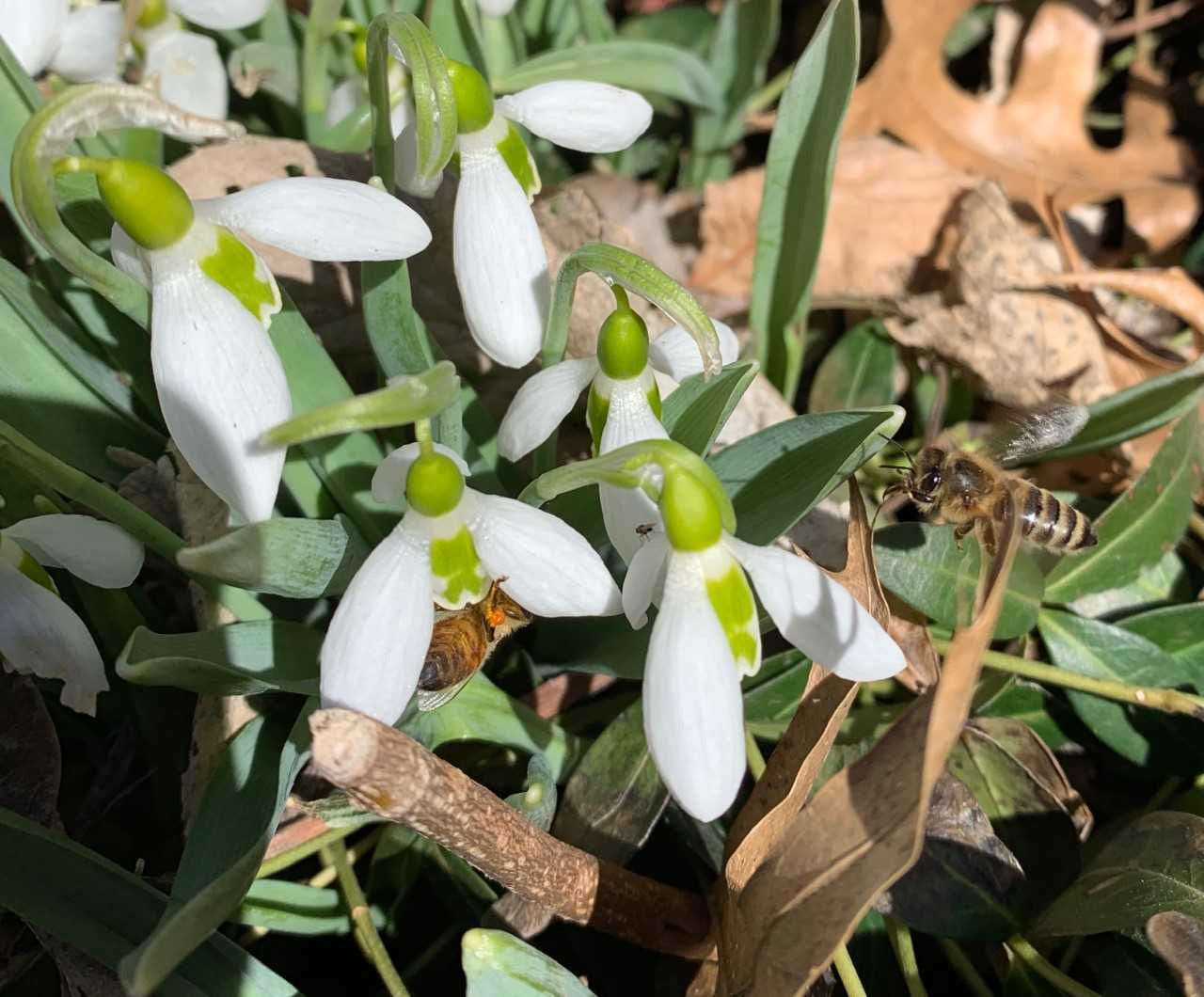
By Mary Jane Frogge, Extension Associate, Lancaster County
Spring blooming plants are very important to early pollinators. It can be hard to find and add these plants to a Nebraska pollinator habitat. Spring flowering bulbs can help fill this early season void. Plant bulbs this fall and next year you will have early spring flowers for bees and other pollinators.
The early spring period after the temperatures have started to warm, but before dandelions have started blooming, is a critical time for bees. Here are spring bulbs to consider adding to your pollinator habitat.
Snowdrops (Galanthus spp.) are white, nodding flowers that will multiple with time. They are the first to bloom, some as early as late January. On a sunny day, with temperatures above 40 degrees F, you can find honeybees visiting snowdrops. Plant in a sunny, south facing location for early blooms.
Crocus (Crocus spp.) are the next to bloom and bees love them. Plant crocuses in drifts to provide loads of pollen and nectar. They generally prefer a sunny spot and are great naturalized in lawns.
Glory-of-the-snow (Chionodoxa spp.) is a wonderful sun-loving bulb. Floriferous and very hardy, Chionodoxas have pink, blue and white flowers. They grow to eight inches.
Siberian squill (Scilla siberica) is a beautiful bulb for sunny areas, with deep-blue flowers and reaches 6-inches high. This exceptionally hardy plant multiples and creates an impressive naturalized area.
Striped squill (Puschkinia scilloides) has flowers that are white with blue stripes. In April of this year, a red admiral butterfly visited my small patch of flowers.
Species tulips (Tulipa spp.) are great for pollinators. Plus bulbs come back year after year. Plant in a sunny, very well-drained place.
Grape hyacinth (Muscari spp.) are scented and a favorite bulb for many gardeners. The purple and white flowers are also a favorite for bees. Plant bulbs in a sunny area.
Checkered lily (Fritillaria meleagris), also called Snake’s head fritillary, have unusual checkerboard patterns on their purple blooms. Plant bulbs in part-shade areas that benefits from reliable moisture.
Many hybridized bulbs do not benefit pollinators, but heirloom or species varieties will be appreciated. Plant bulbs in October, up until the ground freezes in late November. Then look for amazing blooms and visiting pollinators next spring.